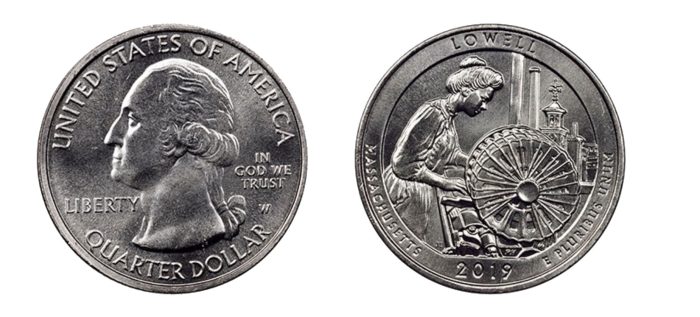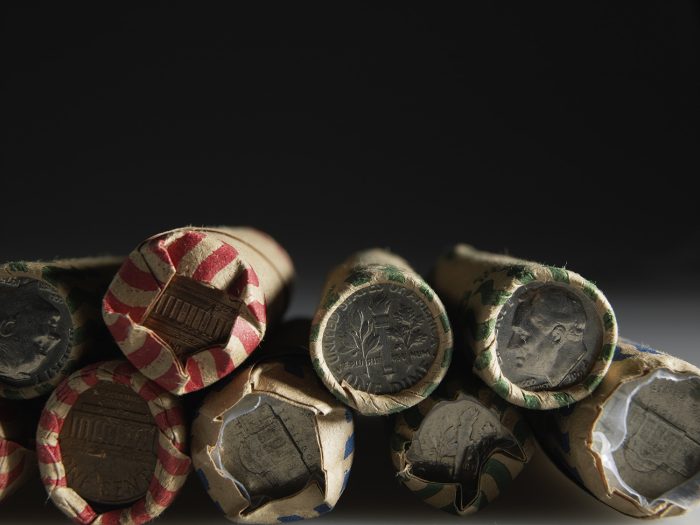Roll with It
Since 2018, I have found more than $10,000 in collectable coins through coin-roll hunting. Coin-roll hunting is the hobby of sorting through boxes of coins looking for valuable pieces. Whether this pursuit is profitable is hotly debated. Most adults dismiss the hunt as not worth their time. But when I started at age 12, it was one of the few ways I could make my own money.
I began coin-roll hunting by asking my mom for a loan to buy a couple boxes of coins. It was a no-risk situation. If I didn’t find anything of value, I’d just return the coins and repay the loan. In the first box of quarters, I found only two issues worth pulling out—a 2009 Hawaii state quarter in excellent shape and a 1964 silver quarter. I had more luck with my first box of half dollars. I found two that were 40-percent silver, and one piece was 90-piece silver. I also pulled out not-intended-for-circulation (NIFC) half dollars and sold several in good shape for 60 cents each.
Was it the most lucrative haul ever? No. But I loved the thrill of the hunt. And with persistence and patience, I made a little extra money. I was able to repeat this process multiple times for a few extra bucks here and there, until April 2019, when, almost overnight, I started making a lot more money.
Fortuitous Events
I credit National Coin Week for my success. Two events happened that week that drastically increased my profits. First, as part of National Coin Week, coin dealers from across the United States began placing collectable coins, including silver pieces, into circulation in hopes that the Great American Coin Hunt would inspire the next generation of young numismatists to begin collecting. Second, around the same time, the U.S. Mint released a limited number of America the Beautiful® quarters with a “W” mintmark.
The “W” stands for West Point. This marked the first time that the West Point Mint, which opened in 1938 as a bullion depository, released a circulating coin using its own mintmark. It started producing circulating cents in 1973 but used the Philadelphia mintmark. It wasn’t until 1988 that West Point officially became a mint. It rarely produced coins with its own mintmark, reserving the “W” for special issues, such as silver American Eagles and commemoratives. In 1996 it released a noncirculating dime stamped with the “W” that was included in the 11-coin mint set to commemorate 50 years of the Roosevelt dime. That’s why in 2019 it came as a surprise that West Point began releasing circulating quarters with a “W” mintmark.
On April 9, 2019, I found three “W”-marked Lowell National Historical Park quarters. That weekend at a local coin show, I sold all three. On the drive home from the show, I stopped by a dozen banks to get more quarters. My haul contained another three “W”s, which I sold on eBay.

Notable Finds
A few months later, the mint released the American Memorial Park quarters. I repeated the same procedure as before, but for some reason, these “W” quarters were scarce. I persisted. One day, a teller I had befriended told me the bank had a whole box of uncirculated quarters in the back, and I could buy 20 rolls if I wanted. I found nothing noteworthy until I got to the sixth roll, which contained the first coveted “W.” I went through the remaining 14 rolls and found 3 more. To this day, those four uncirculated quarters are the only American Memorial Park examples with a “W” mintmark I’ve ever found.
I repeated this process for the next eight designs. One of my more notable finds was a roll of uncirculated San Antonio Missions quarters with “W”-mintmark pieces facing out from both sides, a statistical anomaly. It’s rare enough to find a “W” quarter on the end of a roll, and for it to be oriented with the mintmark showing is pretty cool. But add in the fact that the other side also showed a “W” oriented outward, and I think it’s one of my best finds ever. A local coin dealer offered me $250 for the roll, but I couldn’t bring myself to part with it. I still haven’t opened that roll.
Side Hustle
Now that I am older and can drive, I can make money in other ways. I have a job at All About Coins in Sugarhouse, Utah, where, under the direction of ANA Past President Bob Campbell, I continue to learn about numismatics. Even though I now earn an hourly wage, I still enjoy coin-roll hunting. And I still feel the thrum of excitement when I pull out an Indian Head cent or a Liberty Head “V” nickel from circulation. It’s becoming more and more rare to find the “W” quarters, but I find something noteworthy in most boxes I search.
For young and old collectors alike who want to start coin-roll hunting, I suggest going to your local bank and developing a relationship with the tellers. Ask them about setting up a weekly schedule for ordering coins. Make sure the bank has a coin-counting machine that does not charge customers to return the already sorted coins. Then, simply repeat again and again.

Helpful Tips
Tips to finding collectable coins:
- Use cash.
Check your change after making purchases at the grocery store or your favorite coffee shop or restaurant.
- Check your local coin exchange machines.
Many of these machines reject silver. I’ve found a gold earring and foreign coins in these machines as well.
- Look for “W” and “S” mintmarks.
The San Francisco Mint makes uncirculated and proof coins that are fun to find. Look for “W”s too.
- Remember the year 1964.
Dimes and quarters minted in 1964 and earlier contain silver. People often forget that halves from 1965 to 1970 also contain 40-percent silver.
- Cents are best.
One-cent coins are generally less lucrative than quarters or halves, but they’re a lot of fun. I’ve yet to find a 1909-S VDB cent, but I know people who have.
Casey Hackford-Peer is a 17-year-old numismatist from Salt Lake City, Utah, who has been collecting coins for the past 7 years. He is a senior in high school and works at All About Coins. He collects mainly modern United States coins, and his favorite collection is his (still incomplete) set of Morgan silver dollars. He spent his junior year of high school in France as part of the Rotary Youth Exchange program and now collects francs.
